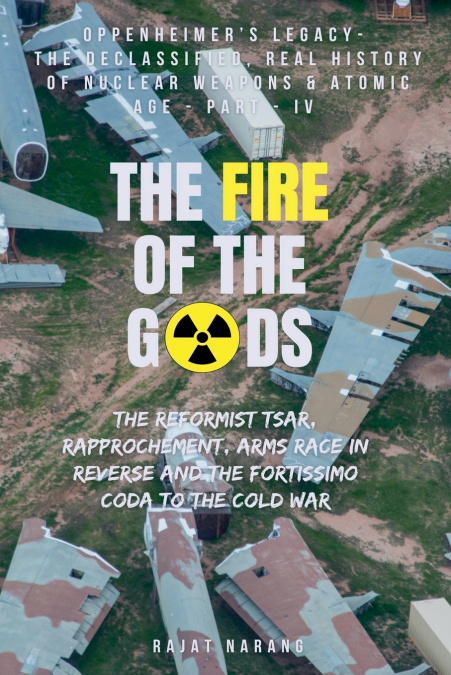
 Librería Perelló (Valencia)
Librería Perelló (Valencia)
 Librería Aciertas (Toledo)
Librería Aciertas (Toledo)
 Librería Elías (Asturias)
Librería Elías (Asturias)
 Donde los libros
Donde los libros
 El AlmaZen del Alquimista (Sevilla)
El AlmaZen del Alquimista (Sevilla)
 Librería Kolima (Madrid)
Librería Kolima (Madrid)
 Librería Proteo (Málaga)
Librería Proteo (Málaga)
After the detente’s sudden and abrupt end in the late 1970s, owing to the planned deployment of Pershing-IIs and the invasion of Afghanistan by the Soviet Union; it was time for the West to strike back under a defiant Ronald Reagan, who vowed to take-on the Soviet overmatch over the West in conventional forces as well as nuclear weapons. The subsequent, massive arms build-up in the U.S. and the advent of a reformist Tsar, in form of Gorbachev, brought a U-Turn in the Soviet approach as the strategic focus shifted across both sides as Reagan outlined his focus of securing Americans from the Soviet ICBMs with his Strategic Defense Initiative (SDI) just as Gorbachev focused on improving the quality of life of Soviets. This contrasting, yet common focus, on people’ welfare enabled the two leaders to collaborate and cooperate towards arms reductions through a series of Superpower summits which ultimately culminated in a series of historic and unprecedented arms control and reduction treaties. However, Gorbachev’s efforts to transition the Soviet Union from Leninism-Marxism towards Social Democracy, while rooting for human rights and freedom, ultimately deteriorated the power and loosened the hold of Gorbachev and the Communist Party on the Stalinist empire in Eastern Europe which ultimately precipitated the disintegration of the Soviet Union end of the Cold War as millions of people oppressed for decades were finally liberated...